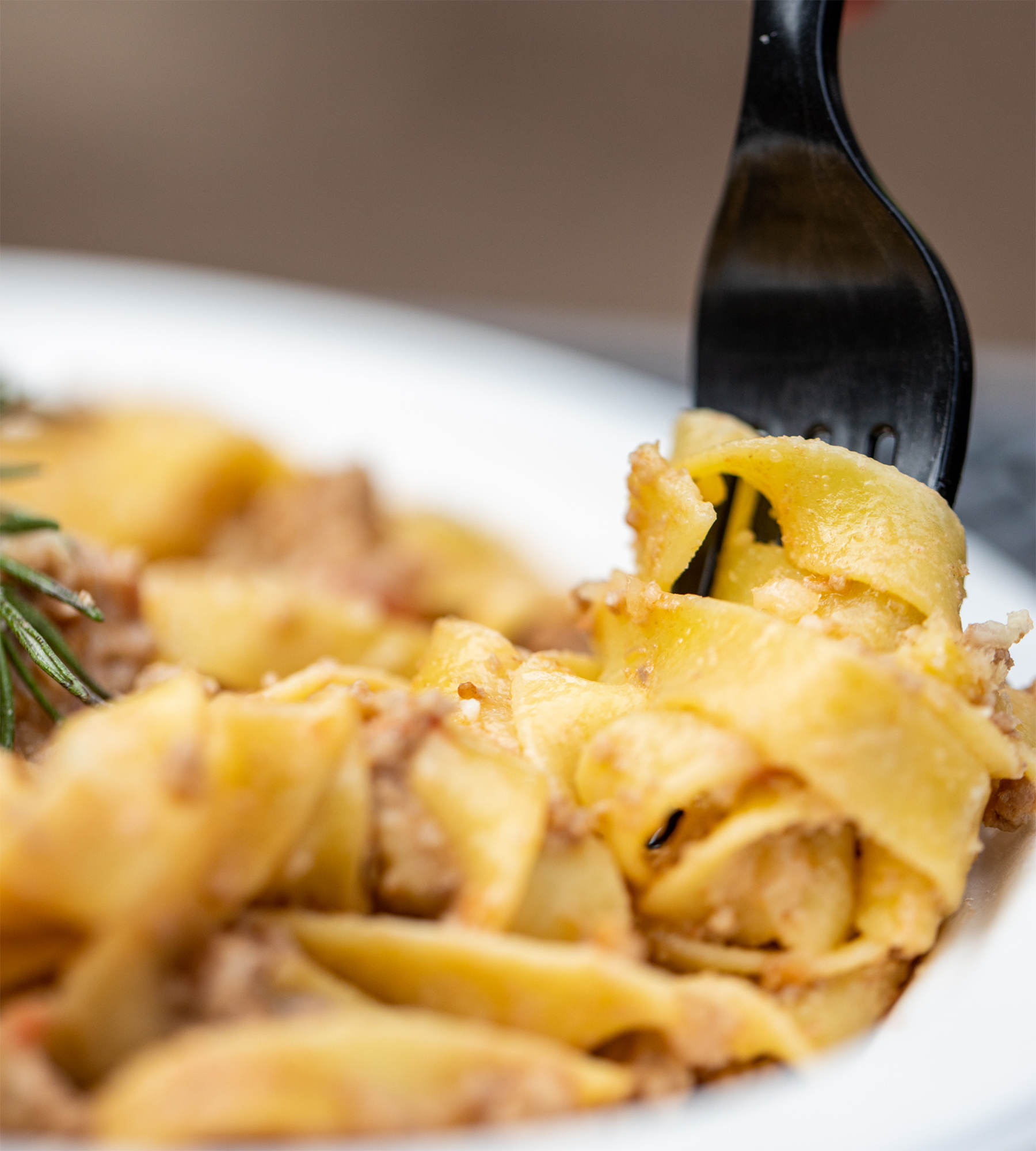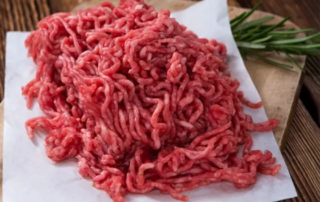Bolognese: The Italian Classic vs. the American Twist
There’s often confusion between the traditional Italian Bolognese (ragù alla Bolognese) and the American version of this sauce. It’s a common topic of discussion in the culinary world and among food enthusiasts. It mainly comes down to differences in ingredients, preparation techniques and how the dish is served. This can sometimes lead to confusion about what the “real” Bolognese should be.
The Traditional Italian Version: Ragù alla Bolognese
Ragù alla Bolognese is a slow-cooked meat sauce with a rich and complex flavour, and it originated in the Italian region of Emilia-Romagna. The Accademia Italiana della Cucina (the Italian Academy of Cuisine) says that the real Bolognese sauce is made with a good mix of meats, vegetables, and seasonings. The classic recipe includes finely minced beef, which is sometimes combined with pork, and is sautéed with a mirepoix of onions, carrots, and celery in olive oil. A little wine is added to give the sauce more flavour, and a splash of milk or cream is used to tone down the acidity of the tomatoes. The amount of tomato used in the authentic Bolognese is much less than in the American version. Tomatoes are often added in the form of a small amount of paste or purée, just enough to give the dish a little colour and acidity. This traditional sauce is made with a slow cooking process. It’s simmered for a few hours to let all the flavours come together and the sauce thicken. The end result is a smooth, meaty sauce with a deep, rich flavour profile. This ragù is usually served with tagliatelle or other broad, flat pasta that can hold the thick sauce, rather than the more common spaghetti. In Bologna, where the dish comes from, it’s often served as part of a bigger meal, even layered in lasagne.
One of the main sources of information on traditional preparation is the Accademia Italiana della Cucina, which formally documented the recipe in 1982. They describe ragù alla Bolognese as a dish with a very specific set of ingredients and preparation steps, saying that tomatoes should play a minor role in the sauce, unlike the American versions that often rely heavily on tomatoes as the base.
The American Version of Bolognese
By contrast, the American version of Bolognese sauce has become a much more tomato-centric dish. In the US, when people say they’re making Bolognese, they often mean a tomato-based meat sauce that’s thicker, sweeter and less complex in flavour than the Italian original. The American version usually includes ground beef (or a mix of beef and pork), more tomatoes, and often herbs like oregano and basil, which aren’t used in the original Bolognese. The American recipe is usually quicker to prepare, and the sauce is often cooked for less than an hour. This gives the American sauce a fresher, brighter tomato flavour, rather than the deep, slow-cooked richness of the Italian version.
One big difference is that in the US, Bolognese is often served with spaghetti, which is a more familiar choice for many American pasta dishes, even though this isn’t how the sauce is paired in Italy. Spaghetti alla Bolognese is so common in the US that many people think it’s the only way to enjoy Bolognese sauce. It’s pretty unusual in Italy to use spaghetti with ragù alla Bolognese because the thin noodles don’t hold up well to the thick sauce. The traditional pairing is tagliatelle, or sometimes pappardelle, which are wider noodles that better suit the texture of the sauce.
The Source of Confusion
It’s easy to see how the two versions of Bolognese can get mixed up. It all started in the early 20th century, when Italian immigrants brought their culinary traditions to the United States. As these dishes evolved in their new home, they were adapted to suit local tastes, which often meant simplifying and altering recipes to fit the American palate. By the mid-20th century, American cookbooks and restaurants were offering their own versions of Bolognese, which were sometimes inspired by the Italian dish but were often more about convenience and mass appeal than authenticity.
Over time, the American version of Bolognese has really come into its own. It’s now the go-to image for most people in the US when they hear the word ‘Bolognese’. For instance, many Bolognese recipes in the US include garlic, onions, bell peppers, and canned tomatoes, which aren’t used in the Italian version. This version is also often cooked relatively quickly, sometimes in less than an hour, while the traditional ragù in Italy requires several hours of slow cooking to develop its signature flavour.
Cultural and Culinary Misunderstanding
In Italy, the American-style Bolognese is seen as a bit of a misinterpretation of the original dish. As Italian chefs like Andrea Ribaldone, a top culinary expert and member of the Accademia Italiana della Cucina, have pointed out, Italian ragù isn’t meant to be a tomato-forward sauce. Ribaldone, who knows a thing or two about traditional Italian cuisine, says that ragù alla Bolognese should be all about the meat and veg, with tomato playing a pretty minor role. In fact, Ribaldone and other chefs from the Emilia-Romagna region have worked hard to keep this dish authentic. They emphasise the importance of quality ingredients and the slow cooking process that gives ragù its depth of flavour.
The name “Bolognese” in the US has become a catch-all term for any rich, meat-based sauce, which has led to further confusion. People often refer to any hearty meat sauce as “Bolognese”, regardless of whether it resembles the traditional Italian version or not. In some cases, the term has simply become synonymous with a hearty pasta sauce rather than a specific recipe from Bologna.
Conclusion
To sum up, the confusion between Italian and American Bolognese comes from a mix of culinary adaptation, cultural differences, and the changing way that foods are named and perceived. The traditional Italian ragù alla Bolognese is a slow-cooked, meat-forward sauce with minimal tomato, whereas the American version is more tomato-centric, faster to prepare, and often served with spaghetti. This has led to a situation where many Americans think of Bolognese as any hearty meat sauce, even if it doesn’t reflect the nuances and complexity of the original dish.
If you want a more authentic experience, it’s important to look at the specific ingredients and techniques used in the traditional Italian version, as documented by the Accademia Italiana della Cucina and celebrated by chefs like Andrea Ribaldone. Knowing these differences can help us keep this much-loved dish true to its roots while also seeing how it has changed in different cultures.







